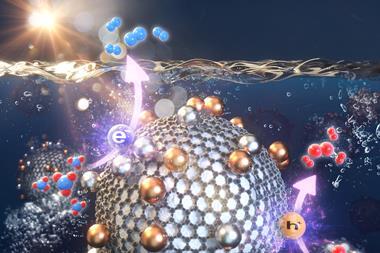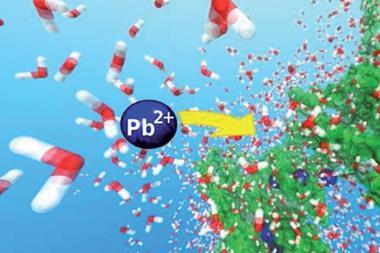Access to clean water is a privilege many of us take for granted. As the world records upwards of 2.7 million deaths from Covid-19, it’s worth noting that conservative estimates link water pollution to 1.8 million deaths every year – many of them children.

Given the importance of developing sustainable and affordable technologies for generating clean water, when I came across a study we reported on back in February I initially found it hard to believe that it was breaking new ground. Surely scientists are routinely using state-of-the-art computational tools such as molecular dynamics simulations to understand on a molecular level how cheap and locally abundant materials might remove contaminants like heavy metals from water sources? Apparently not.
Molecular dynamics simulations allow scientists to scrutinise chemical systems at spatial and temporal resolutions that are unreachable with experimental techniques. Advances in computing power and force fields mean molecular dynamics simulations for systems comprising millions of atoms on nanosecond timescales are now possible, which is sufficiently large to probe many biomolecular phenomena. You only need to consider how simulations have advanced drug discovery to appreciate how useful they are. The productivity gains of using molecular dynamics simulations to screen libraries of molecules to find those that fit best into the binding pocket of a therapeutic target are probably the most obvious benefit. But there are many more.
Researchers have studied water purification membranes made from things like liquid crystals, graphene oxide and carbon nanotubes with molecular dynamics simulations. Simulations can help interpret and guide experiments. They can help researchers understand what stability issues a material might have in different environments and what functional groups speed up or slow down water transport.
Many water purification concepts fail to become real life applications because they are hard to scale-up. Ease of use and cost-effectiveness in terms of both money and energy are just as important to consider, particularly in the resource-poor communities that often lack clean water
Climate change, aging infrastructure and urbanisation means global challenges surrounding water quality and quantity are going to intensify. Solutions to these problems aren’t only about developing clever techniques and materials. Water purification research needs a holistic approach that involves chemists, environmental scientists, product designers, social scientists and economists. Collaborating across disciplines needs to become routine, as do effective international policies to bring technology where it’s needed. Science is never going to solve Earth’s most pressing concerns without combining diverse expertise to tackle problems from all angles.












No comments yet